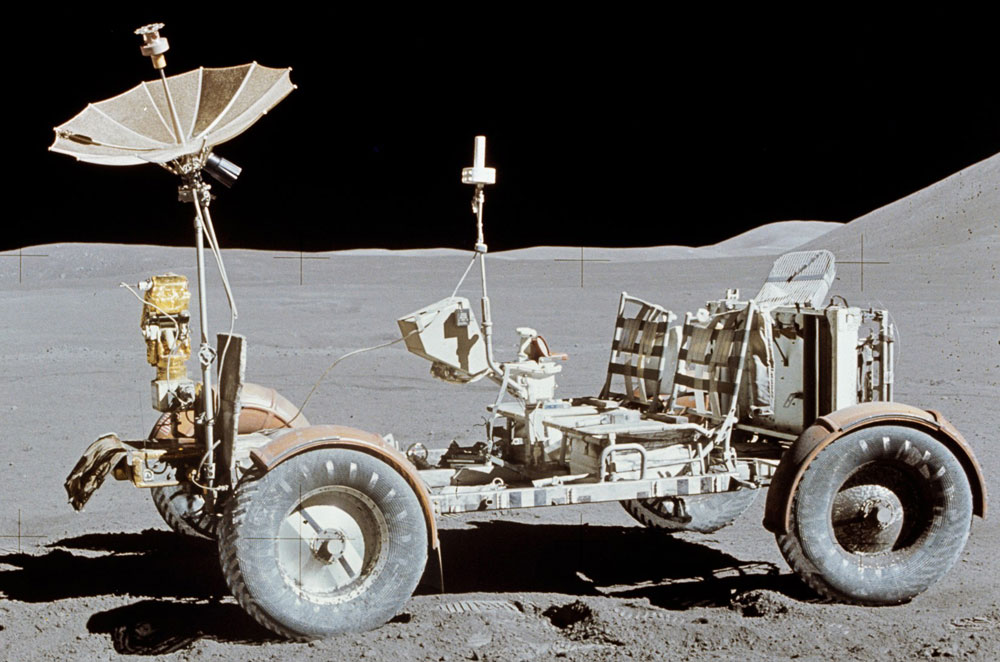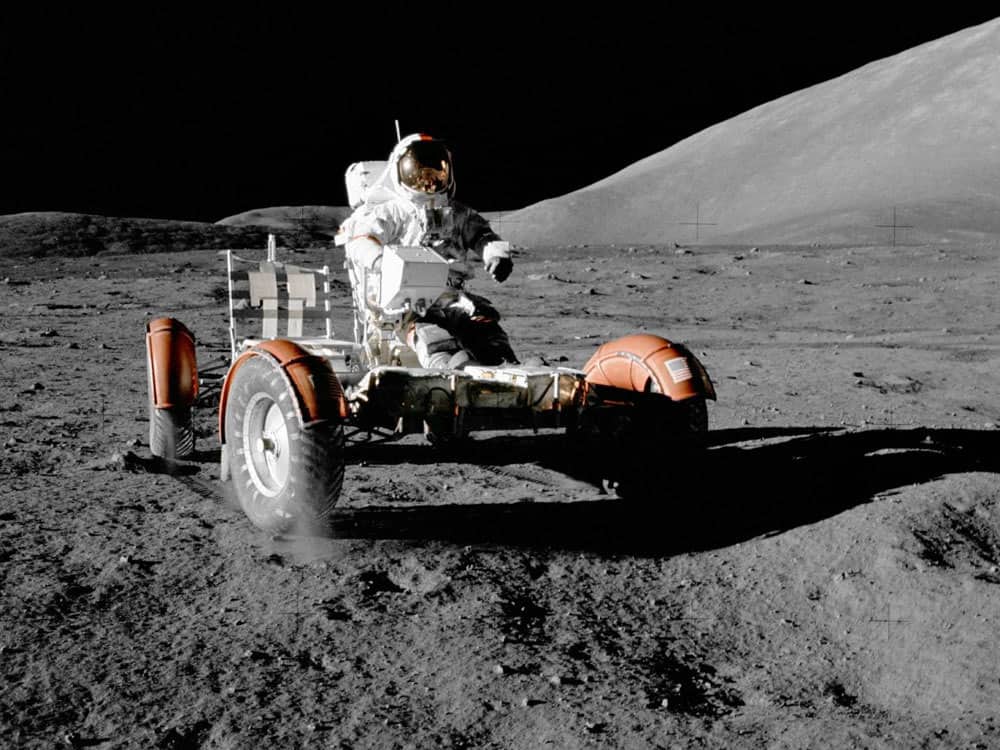It might be one of the coolest offroad vehicles ever built. It’s easily one of the more sophisticated, and sans argument the only manned vehicle to get to romp around the untracked surface of the moon. It is of course, the Lunar Roving Vehicle (LRV), commonly known as the Lunar Rover. What amounted to one of the most daunting engineering challenges of its day, it took an immense collaborative effort just to finalize the challenges of such a project, let alone conquer them. Prior to 1964, a team of engineers from Lockheed, Bendix, Boeing, General Motors, Brown Engineering, Gruman, and Bell Aerospace had all gathered heads to tackle the design and fabrication of this buggy. Nothing was officially pursued until just prior to the Apollo 15 launch. After only 17 months of development, a functioning Lunar Rover was shredding doughnuts and catching air on the surface of the moon. Two more would be dispatched to the moon with the Apollo 16 and 17 missions.
If we know anything, Expedition Portal readers love stats. Imagine this: The LRV was not just four-wheel drive by way of individual motors on each corner, it had four-wheel steering. To achieve an impossibly tight turning radius of just 10 feet, it could drive its wheels in opposite directions. It had 32” tires made of stainless steel mesh with titanium tread chevrons and naturaly it had a color TV at a time when few homes had such a contraption. Astronaut Eugene Cernan won the moon-speed record having achieved 11.2 mph, and video from Apollo 17 shows what could easily be considered Rover hooliganism with the wheels frequently leaving the moon’s surface. What’s even more amazing is that the LRV was fully controlled with a simple T-handle joystick. Power at each motor was a lowly .25 hp, but that mattered little considering the whole vehicle weighed less than 77 pounds. Okay, those are “moon pounds,” but even here on Mother Earth, it only weighed 463 pounds.
Perhaps the most amazing thing about the Rover was not the four wheel independent drive, or steering capabilities. The biggest challenge was the most obvious––getting it to the moon. To achieve that end, the Lunar Rover had to be folded and placed on the outside of the Lunar Module. As to not consume precious time once on the moon, the whole compact Lunar Rover unit could be deployed in a matter of minutes by two astronauts and with minimal effort. The two astronauts would lower the Lunar Rover with two small straps, and as the Rover was slowly floating to the moon’s surface, it would automatically unfold. A couple pins here, a few snaps there, finishing with a flick of a switch, and the Lunar Rover was ready for action.
As was the case for every Apollo mission, every possible data set was recorded, and the Lunar Rover sessions were no exception. The Apollo 15 rover traveled a maximum distance of 17.25 miles, Apollo 16 did 16.5 miles, but Apollo 17 clocked in 22.3 miles with a maximum distance from the Lunar Module pushing five miles. A breakdown at 5 miles out would have been certain death for the astronauts.

Of the astronauts to be granted the rare opportunity to be apart of an Apollo mission, those who got to drive a Lunar Rover say it was a highlight of the project. What was once fantasized about in romantic images in Popular Mechanics magazines of the 1960’s was the reality just a decade later. How amazing it must have been to be able to offroad off planet.


Training variations were made to give astronauts a means to get acquainted with the unique controls of the Lunar Rover.


